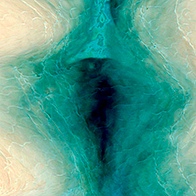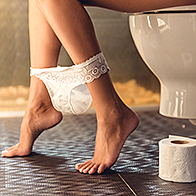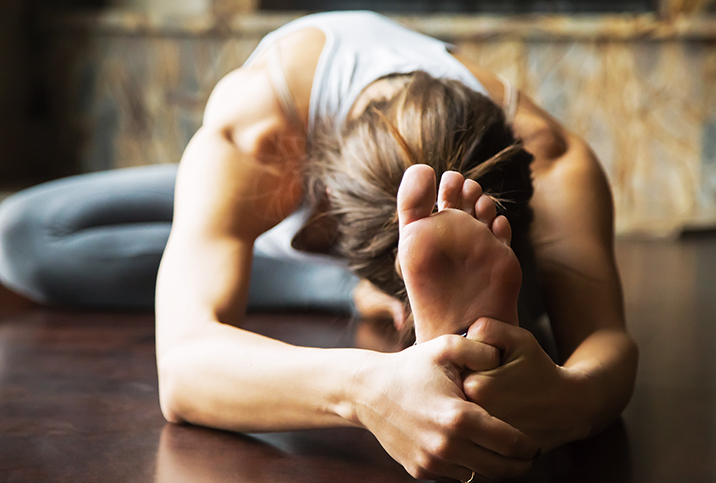How to Avoid Vaginal Tearing

Even simply uttering the words "vaginal tearing" can induce fear in some women, said Anna Cabeca, a triple-board-certified OB-GYN and author from Georgia. Unfortunately, the nerve-wracking phenomenon is common, occurring during childbirth and menopause.
"Vaginal tearing is when there is a rip or tear in the vaginal walls," Cabeca explained. "It can be superficial like an abrasion or it can go deep into the tissue."
She added that signs and symptoms of vaginal tearing to look for include pain, bleeding or spotting, discomfort and discharge.
Causes behind vaginal tearing
Perhaps unsurprisingly, childbirth is the most common cause of vaginal tearing.
"Vaginal tearing occurs because a really big baby comes out of a relatively limited space," Cabeca said. "Hormones in pregnancy increase the flexibility of the vaginal walls, yet tearing can still occur."
She noted that vaginal tearing can happen whether or not the patient has an episiotomy, a surgical incision in the perineum, the area between the vagina and anus, meant to prevent vaginal tearing.
Although vaginal tearing generally happens due to trauma such as childbirth, Cebeca said severe atrophy of the vagina and vulva, or skin disorders such as vulvar dystrophy or lichen sclerosis, can also lead to vaginal tearing.
Tearing occurs only when there is distention or trauma to the vagina.
Furthermore, perimenopausal women may experience vaginal tearing from sex.
"It is because of a decrease in hormones and a decrease in flexibility of the vaginal walls," Cabeca explained. "Over time, the loss of muscle and fascial integrity and lack of lubrication can result in abrasions or small tears in the vagina. This can lead to pain, discharge and odor."
The good news, Cabeca added, is that though these types of vaginal tears can be uncomfortable and painful, they rarely ever require surgical intervention.
As for intercourse, you can let out a sigh of relief, as Cabeca said it's unlikely to cause vaginal tearing in most situations. As mentioned, vaginal tearing occurs only when there is distention or trauma to the vagina.
Prevention of vaginal tearing
To prevent vaginal tearing during childbirth and labor, Cabeca recommended taking the time to adjust positions. Your doctor can help you find the most comfortable and safe delivery position.
"Placing a warm perineal compress on the perineal tissues during the pushing phase of labor is recommended and shown to reduce severity of perineal tears," said Ashley Rawlins, D.P.T., a pelvic floor therapist in Dallas. "This compress can be applied by the OB or any member of the labor and delivery team."
Cabeca also noted that slowing labor down can help. This allows time for the body and vaginal opening to stretch as the baby's head goes through the vaginal canal. In addition, some experts believe massaging the perineum before delivery can also help avoid vaginal tearing during childbirth.
"Perineal massage, performed in the weeks prior to delivery, has been shown to reduce the severity of tearing during delivery," Rawlins said. "Often recommended as part of a birth prep routine, perineal massage consists of a stretching routine for your perineal tissues. Perineal massage may also be helpful if done during the pushing phase of labor."
The best course of action is talking about your vaginal tearing concerns with your OB-GYN. They may suggest prevention techniques or offer other advice to best prepare for delivery.
To help avoid vaginal tearing in the menopausal transition, Cabeca advised using adequate amounts of lubrication, such as coconut oil or water-based lube, during sex.
"As we age, changes occur in these areas, as well, creating decreased lubrication and decreased skin integrity," she said.
Moreover, Cabeca said incorporating regular vaginal stimulation—whether manually or with a vibrator—can also help prevent tearing.
Cabeca also recommended women in menopausal transition use natural, clean moisturizers that don't contain any parabens, sodium laurel sulfates, phthalates or other chemicals which can adversely affect the vaginal tissue over time.
Most importantly, Cabeca encouraged having your doctor examine the area, especially for women in menopause.
"Consult with your doctor about the health of your vagina and vulvar skin, and not to forget looking at the clitoris and anus," she said.
Being preemptive about vaginal health will, in turn, help avoid vaginal tearing and abrasions down the road.
Pain is your body telling you something is wrong
As a rule of thumb, Cabeca said something hurting is a red flag, and the underlying causes should be investigated with the help of a doctor.
In discussing vaginal tearing with your doctor, Cabeca said they may recommend applying bioidentical hormones such as estrogen, progesterone, testosterone and DHEA vaginally, which can be therapeutic and help prevent tearing.
If vaginal tearing does occur, the healing process differs depending on the tear.
"The vagina will typically heal a small tear by itself, while larger tears that go into the fascia and muscle have to be sutured," Cabeca explained. "Massaging the scar, physical therapy and pelvic floor exercises can be really helpful, too."
Rawlins echoed this advice and emphasized the importance of pelvic physical therapy after childbirth.
"Tearing will commonly affect your pelvic floor muscles, and pelvic floor muscle dysfunction can develop, contributing to symptoms such as leakage [stool or urine], urinary frequency or urgency, constipation, pelvic heaviness or feeling of falling out, pain with sex or sexual dysfunction, and even pelvic or low back pain," she said.
"Pelvic floor muscle dysfunction is not likely to go away on its own," she continued. "Using safe and effective, evidence-based treatment techniques, pelvic physical therapy has been shown to improve pelvic floor muscle dysfunction and really make a difference in your postpartum healing."
Avoiding vaginal tearing is possible, whether you've given birth or not. Take it easy, don't be hard on yourself, and recovery will appear faster than you expected.




















